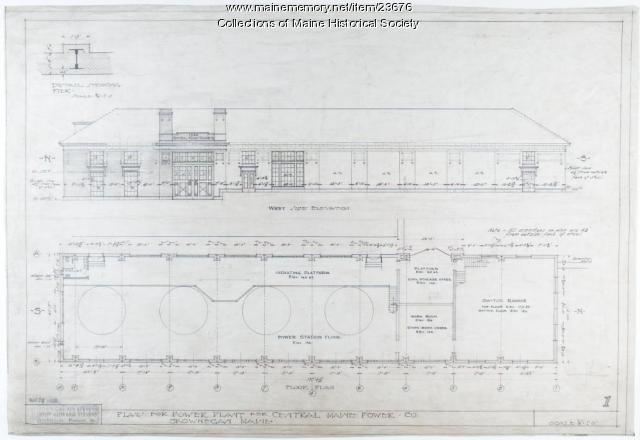Keywords: Planting plan
Item 23676
Skowhegan Power Plant plan, 1920
Contributed by: Maine Historical Society Date: 1920 Location: Skowhegan Media: Ink on paper
Item 33912
Orchard Plan, Blue Hill, ca. 1800
Contributed by: Jonathan Fisher Memorial, Inc. Date: circa 1800 Location: Blue Hill Media: Ink on paper
Item 86268
Power Plant, Commercial Street, Portland, 1924
Owner in 1924: Central Wharf Proprietors Use: Power Plant
Item 88127
Power Plant, Island Avenue, Portland, 1924
Owner in 1924: Charles Brown Use: Power Plant
Item 150875
Planting Plan for J. H. Smith, Falmouth, 1891
Contributed by: Maine Historical Society Date: 1891 Location: Falmouth Client: J. H. Smith, Esq. Architect: Olmsted Brothers
Item 151872
Foulke residence, Seal Harbor, 1992-1995
Contributed by: Maine Historical Society Date: 1992–1995 Location: Mount Desert Client: William G. Foulke Architect: Patrick Chasse; Landscape Design Associates
Exhibit
The Establishment of the Troy Town Forest
Seavey Piper, a selectman, farmer, landowner, and leader of the Town of Troy in the 1920s through the early 1950s helped establish a town forest on abandoned farm land in Troy. The exhibit details his work over ten years.
Exhibit
Wired! How Electricity Came to Maine
As early as 1633, entrepreneurs along the Piscataqua River in southern Maine utilized the force of the river to power a sawmill, recognizing the potential of the area's natural power sources, but it was not until the 1890s that technology made widespread electricity a reality -- and even then, consumers had to be urged to use it.
Site Page
John Martin: Expert Observer - John Martin barn plan, Bangor, 1867
"John Martin barn plan, Bangor, 1867 Contributed by Maine Historical Society and Maine State Museum Description John Martin (18223-1907), a…"
Site Page
John Martin: Expert Observer - Plan of North End of Bangor, 1844
"Plan of North End of Bangor, 1844 Contributed by Maine Historical Society and Maine State Museum Description In 1864, John Martin drew…"
Story
Growing up DownEast
by Darrin MC Mclellan
Stories of growing up Downeast
Story
Norcross Deer Hunting
by Albert Fowler
How hunting has impacted my life
Lesson Plan
Why is Maine the Pine Tree State?
Grade Level: K-2
Content Area: Social Studies
This lesson plan will give students in early elementary grades a foundation for identifying the recognizable animals and natural resources of Maine. In this lesson, students will learn about and identify animals and plants significant to the state, and will identify what types of environments are best suited to different types of plant and animal life. Students will have the opportunity to put their own community wildlife into a large-scale perspective.
Lesson Plan
Grade Level: 3-5, 6-8, 9-12
Content Area: Science & Engineering, Social Studies
This lesson plan will give middle and high school students a broad overview of the ash tree population in North America, the Emerald Ash Borer (EAB) threatening it, and the importance of the ash tree to the Wabanaki people in Maine. Students will look at Wabanaki oral histories as well as the geological/glacial beginnings of the region we now know as Maine for a general understanding of how the ash tree came to be a significant part of Wabanaki cultural history and environmental history in Maine. Students will compare national measures to combat the EAB to the Wabanaki-led Ash Task Force’s approaches in Maine, will discuss the benefits and challenges of biological control of invasive species, the concept of climigration, the concepts of Traditional Ecological Knowledge (TEK) and Indigenous Knowledge (IK) and how research scientists arrive at best practices for aiding the environment.





















